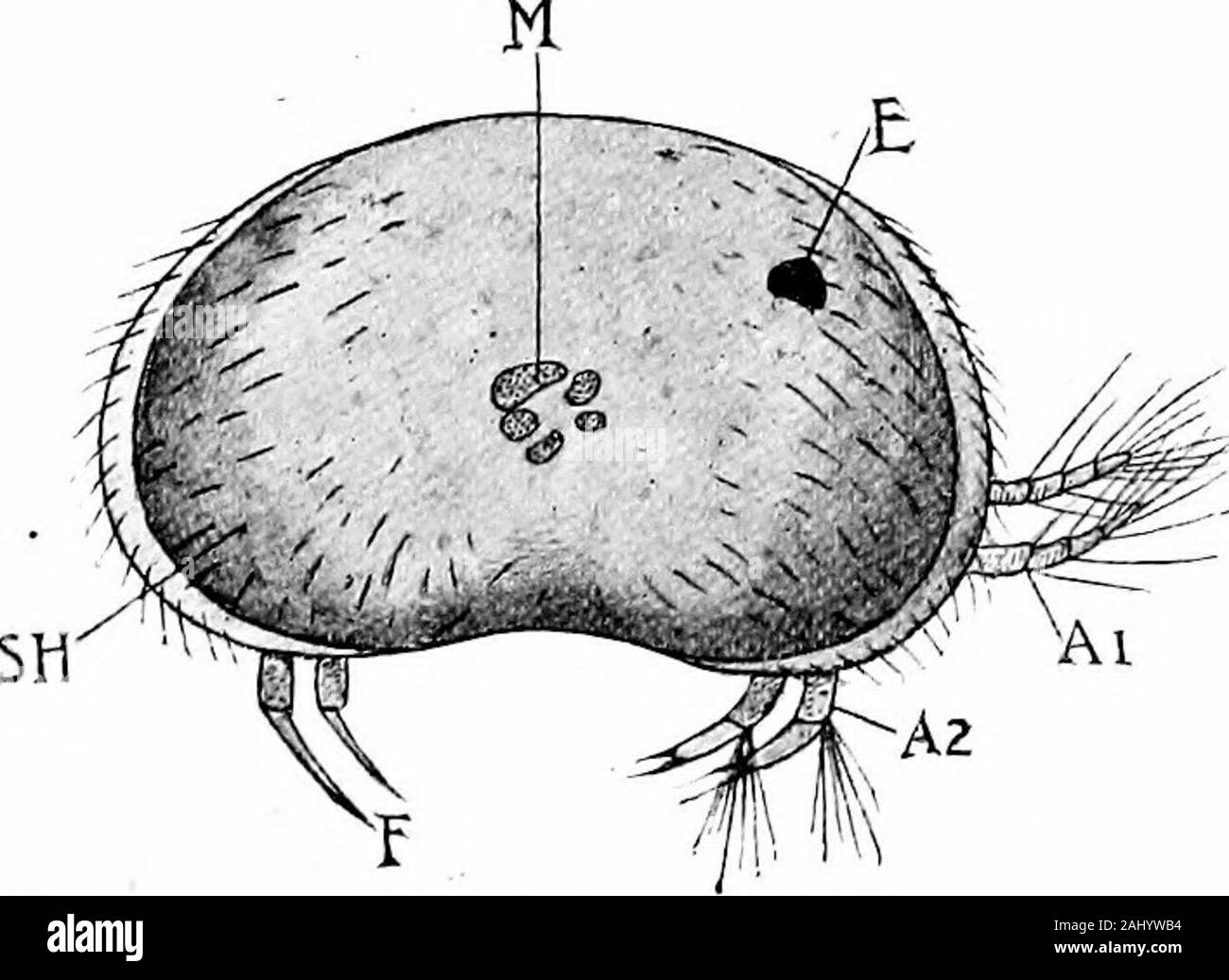Outlines of zoology . hedthroughout the summer. Periodic parthenogenesis (of thesummer ova) is very common. Winter eggs, whichrequire fertilisation, are set adrift in a part of the shell modifiedto form a protective cradle or ephippium. Daphnia, Moina, Sida, Polyphemus^ Leptodora, and manyother water-fleas, are extraordinarily abundant in freshwater, and form part of the food of many fishes. A fewoccur in brackish and salt water.In Daphnia the appendages are:—antennules, antennae,mandibles, first maxillse, second maxilJEe (disappearing in thelarva), and five thoracic limbs. The abdomen is turn

Image details
Contributor:
The Reading Room / Alamy Stock PhotoImage ID:
2AHYWB4File size:
7.2 MB (244.6 KB Compressed download)Releases:
Model - no | Property - noDo I need a release?Dimensions:
1852 x 1350 px | 31.4 x 22.9 cm | 12.3 x 9 inches | 150dpiMore information:
This image is a public domain image, which means either that copyright has expired in the image or the copyright holder has waived their copyright. Alamy charges you a fee for access to the high resolution copy of the image.
This image could have imperfections as it’s either historical or reportage.
Outlines of zoology . hedthroughout the summer. Periodic parthenogenesis (of thesummer ova) is very common. Winter eggs, whichrequire fertilisation, are set adrift in a part of the shell modifiedto form a protective cradle or ephippium. Daphnia, Moina, Sida, Polyphemus^ Leptodora, and manyother water-fleas, are extraordinarily abundant in freshwater, and form part of the food of many fishes. A fewoccur in brackish and salt water.In Daphnia the appendages are:—antennules, antennae, mandibles, first maxillse, second maxilJEe (disappearing in thelarva), and five thoracic limbs. The abdomen is turned down-wards and forwards, and shows three segments and a telson. Order 2. Ostracoda.—Small Crustaceans, usually laterally compressed, with an indistinctly segmented or unsegmented body, rudimentaryabdomen, and bivalve shell. There are only seven pairs of nules, antenna, mandibles, first maxillte, two pairs of thoracic limbs. Parthenogenesis-is often prolonged. Examples.—Cypris (fresh water), Cypridina (marine).. Fig. 155.—Cj/r/j-. M.^ Marks of adductor muscle ; E., eye seen through the shell (^//.);:A.l^ first antennae ; A.2, second anlennse ; F., thoraciclegs. J02 PHYLUM ARTHROPODA.